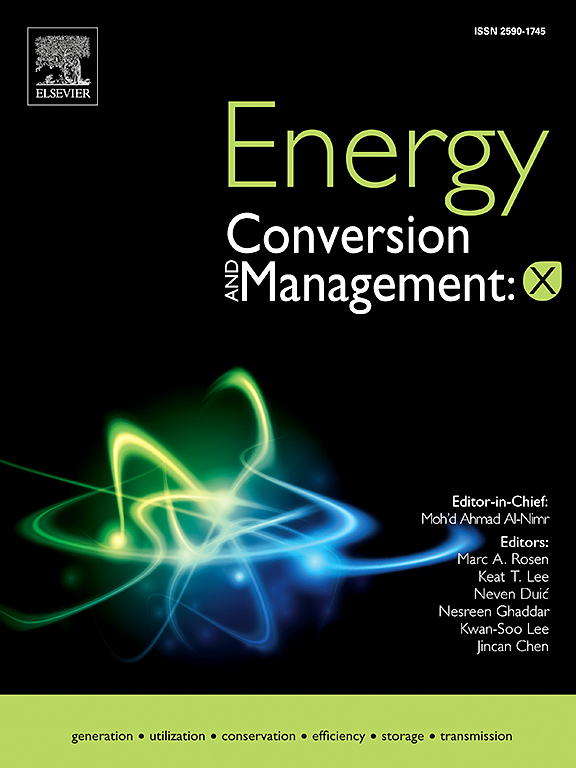Synergistic torrefaction of plastic polymers and biomass
IF 9.9
1区 工程技术
Q1 ENERGY & FUELS
引用次数: 0
Abstract
This study explores the synergistic torrefaction of biomass and plastics, aimed at enhancing bioenergy production and promoting a circular economy. By leveraging the unique properties of both materials, we investigated the thermochemical transformations occurring during the torrefaction process, from material preparation to the final characteristics of the torrefied product. The biomass used included corn stover (CS) and loblolly pine (LP), while various plastics were categorized from #1 to #7. Torrefaction was conducted at temperatures of 200, 225, and 250 °C, with subsequent extrusion of the torrefied materials and raw materials to produce composite filaments. The results show a consistent decrease in mass yield with increased torrefaction temperature, with notable variations among different biomass-plastic combinations. Co-torrefaction of biomass with polyvinyl chloride and polypropylene resulted in accelerated reaction kinetics, with an observed mass loss rate increase of 15 % at 250 °C compared to the expected rates for individual components. This synergy was quantified, indicating a 20.3 % increase in mass loss for the loblolly pine-polypropylene combination and 23.9 % for corn stover-polypropylene. In contrast, other plastics, including polyethylene terephthalate, high-density polyethylene, low-density polyethylene, polystyrene, and polycarbonate, did not exhibit significant synergistic effects. Mechanical testing indicated that the torrefaction process alters the strength and brittleness of the resulting materials, with implications for their application in bioenergy production and bio-renewable materials. Overall, this research highlights the potential of synergistic torrefaction as a viable strategy for co-processing biomass and plastics, paving the way for innovative solutions in waste management and renewable energy resource development.

塑料聚合物与生物质的协同焙烧
本研究探讨了生物质和塑料的协同作用,旨在提高生物能源生产和促进循环经济。通过利用这两种材料的独特性能,我们研究了在碳化过程中发生的热化学转化,从材料制备到碳化产品的最终特性。使用的生物质包括玉米秸秆(CS)和火炬松(LP),而各种塑料被分类为#1到#7。在200、225和250℃的温度下进行烘烤,随后将烘烤后的材料和原材料挤压制成复合长丝。结果表明,随着焙烧温度的升高,质量产率呈一致的下降趋势,且不同生物质-塑料组合之间存在显著差异。生物质与聚氯乙烯和聚丙烯共焙烧导致反应动力学加速,与单个组分的预期速率相比,在250°C时观察到的质量损失率增加了15%。这种协同效应被量化,表明火炬松-聚丙烯组合的质量损失增加20.3%,玉米秸秆-聚丙烯组合的质量损失增加23.9%。相比之下,其他塑料,包括聚对苯二甲酸乙二醇酯、高密度聚乙烯、低密度聚乙烯、聚苯乙烯和聚碳酸酯,没有表现出显著的协同效应。力学试验表明,焙烧过程改变了所得材料的强度和脆性,这对其在生物能源生产和生物可再生材料中的应用具有重要意义。总的来说,这项研究强调了协同焙烧作为生物质和塑料共同处理的可行策略的潜力,为废物管理和可再生能源开发的创新解决方案铺平了道路。
本文章由计算机程序翻译,如有差异,请以英文原文为准。
求助全文
约1分钟内获得全文
求助全文
来源期刊

Energy Conversion and Management
工程技术-力学
CiteScore
19.00
自引率
11.50%
发文量
1304
审稿时长
17 days
期刊介绍:
The journal Energy Conversion and Management provides a forum for publishing original contributions and comprehensive technical review articles of interdisciplinary and original research on all important energy topics.
The topics considered include energy generation, utilization, conversion, storage, transmission, conservation, management and sustainability. These topics typically involve various types of energy such as mechanical, thermal, nuclear, chemical, electromagnetic, magnetic and electric. These energy types cover all known energy resources, including renewable resources (e.g., solar, bio, hydro, wind, geothermal and ocean energy), fossil fuels and nuclear resources.
 求助内容:
求助内容: 应助结果提醒方式:
应助结果提醒方式:


